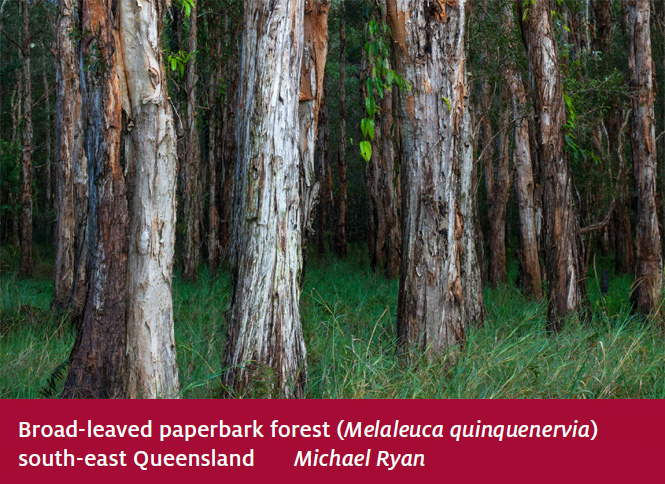This profile has been superseded by the 2019 version, which is available here.
Information for this profile is drawn from Australia's State of the Forests Report 2013.
Australia has 6.4 million hectares of Melaleuca native forest, mainly found in northern Australia.
There are more than 200 species of melaleucas, most of which are endemic to Australia. However, only a few species develop into trees. These taller melaleucas are commonly called paperbarks or tea-trees. Common species include broad-leaved paperbark (Melaleuca viridiflora) and weeping paperbark (M. leucadendra).
The bark of many melaleucas (particularly the larger tree species) is distinctive. The bark is made up of multiple thin layers of paper-like cork separated by thin fibrous layers. In some species, this papery bark can grow up to five centimetres thick before peeling.
Bark colours include off-white, light and dark brown, and almost black. The name melaleuca is derived from the Greek words melas (black) and leukos (white).
Distribution and ownership
The Melaleuca forest type is found in all states and the Northern Territory (Map 1). It occurs mainly as areas of low woodland forest across estuarine plains and seasonal swamps in the coastal and near-coastal areas of monsoonal northern Australia. It also grows in narrow strips beside streams.
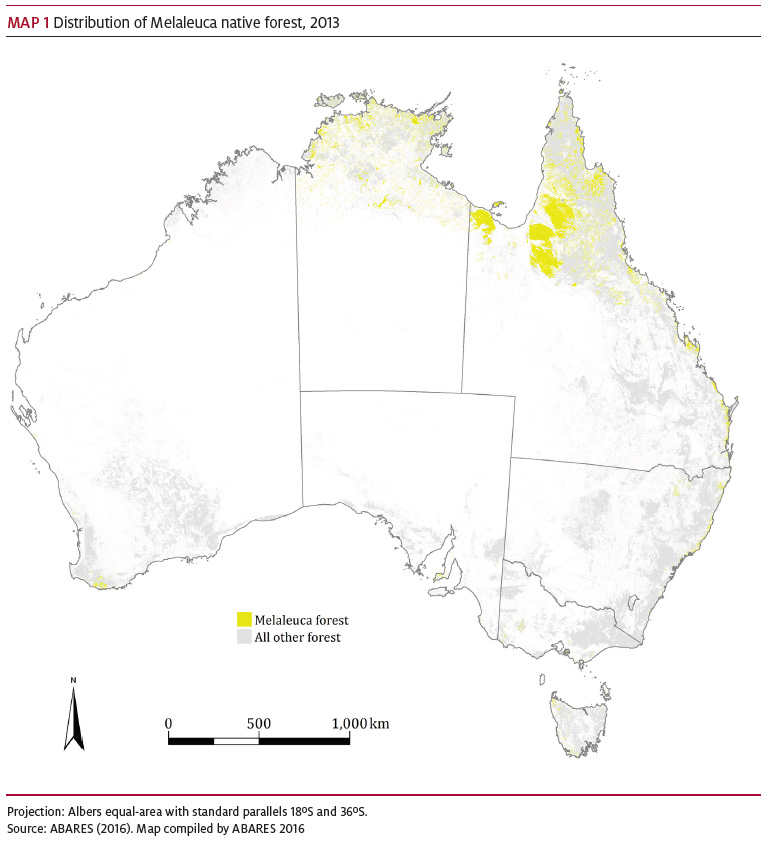
Open a high-resolution version of Map 1 that can be saved as a PNG file
Most of the Melaleuca forest type is found in the Cape York region of Queensland and the northern part of the Northern Territory. A total of 5.2 million hectares (83 per cent) are in Queensland and 0.9 million hectares (14 per cent) are in the Northern Territory. Swamps dominated by Melaleuca forest also occur on poorly drained sites on the east coast of mainland Australia and in north-western Tasmania.
A total of 4.7 million hectares (75 per cent) of Melaleuca forest is on leasehold land and 1.0 million hectares (16 per cent) are on private land (Table 1).
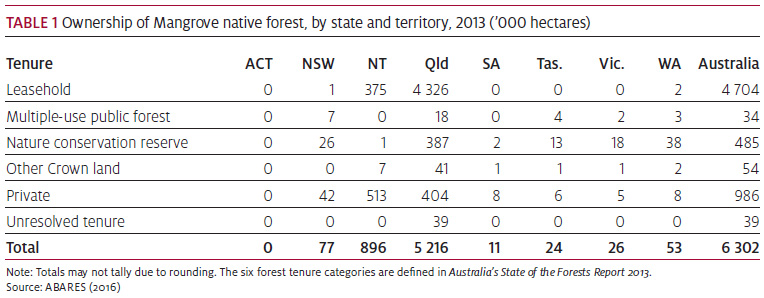
Download Table 1 data as an Excel workbook
Forest structure
A total of 5.4 million hectares (85 per cent) of Melaleuca forest is woodland forest and 4.9 million hectares (78 per cent) are low forest (Figure 1).
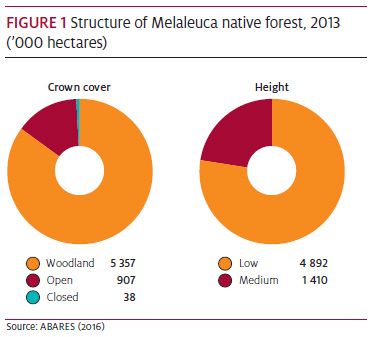
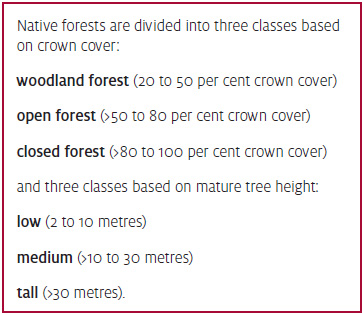
Importance and uses
Melaleuca forests trap vegetation and debris deposited in coastal areas during floods and storms. This provides habitat for fish species, retains and filters water and reduces soil and sediment run-off.
Melaleuca forests also provide habitat for many species of birds, including herons, egrets, bitterns and spoonbills. Some birds, such as the great-billed heron, nest and breed only in melaleuca and mangrove trees in tropical estuaries.
The foliage of several species contains essential oils (such as tea-tree oil) that have medical and pharmacological uses. Some have germicidal and antibacterial properties and are used to treat a range of conditions.
Melaleuca wood is particularly durable in water and is highly resistant to termites. Melaleuca timber has historically been used for marine pilings, knee joints for vessels, framing and flooring.
Bibliography
ABARES 2016, Forests of Australia (2013) v2.0, Australian Bureau of Agricultural and Resource Economics and Sciences.
Boland, D, Brooker, M, Chippendale, G, Hall, N, Hyland, B, Johnston, R, Kleinig, D, McDonald, M & Turner, J 2006, Forest trees of Australia, 5th edn, CSIRO Publishing, Melbourne.
Carnahan, JA 1990, Atlas of Australian resources, vol. 6, Vegetation, Australian Government Publishing Service, Canberra.
McKilligan, N 2005, Herons, egrets and bitterns: their biology and conservation in Australia, CSIRO Publishing, Melbourne.
Montreal Process Implementation Group for Australia & National Forest Inventory Steering Committee 2013, Australia’s State of the Forests Report 2013, Australian Bureau of Agricultural and Resource Economics and Sciences, Canberra.

